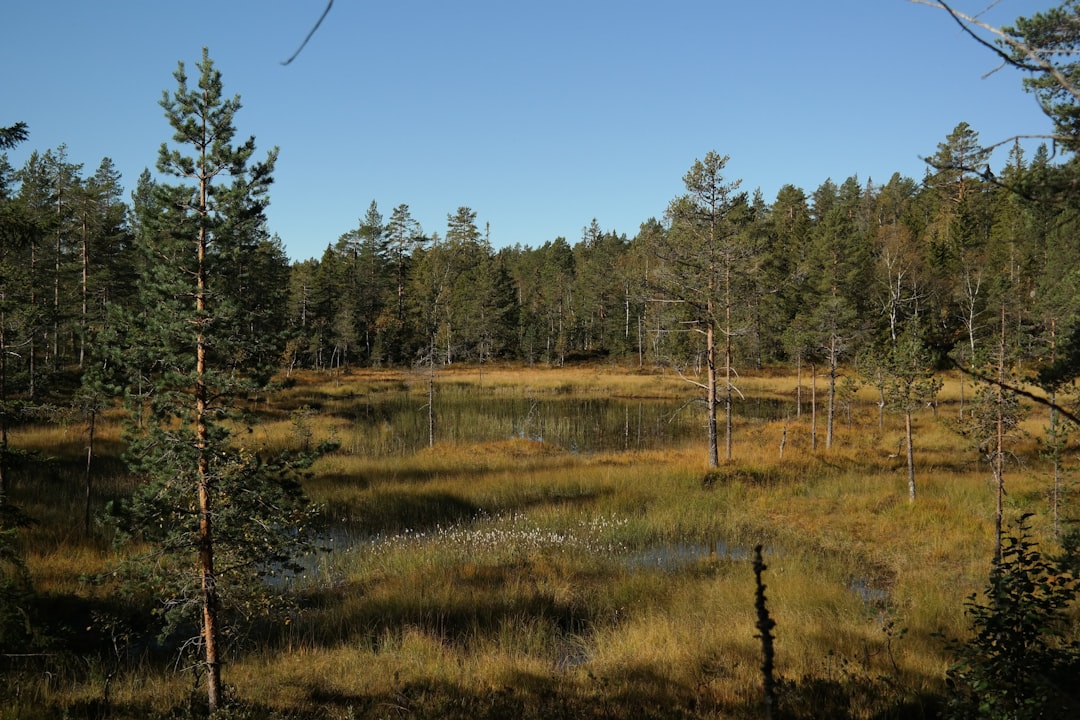Recycling in Norway has a rich history that dates back to the early 20th century, when the concept of reusing materials began to gain traction. Initially, recycling efforts were largely informal and community-driven, with local initiatives encouraging the collection and repurposing of materials such as paper and glass. During the post-war period, as Norway experienced rapid industrial growth, the need for a more structured approach to waste management became apparent.
The burgeoning consumer culture led to increased waste generation, prompting the government and various organisations to take action. By the late 20th century, Norway had begun to establish a comprehensive recycling system that would serve as a model for other nations. The introduction of formal policies and regulations aimed at promoting recycling marked a significant turning point.
In 1999, the Norwegian government implemented the Waste Regulation Act, which laid the groundwork for a more systematic approach to waste management. This legislation not only encouraged recycling but also mandated that municipalities develop their own waste management plans, ensuring that recycling became an integral part of local governance. Plan your relocation with confidence. Book a personal meeting with the Norway Relocation Group today.
Summary
- Norway has a long history of recycling, from early efforts to a comprehensive system.
- The government plays a crucial role in Norway’s recycling system through policies and regulations.
- Norwegians recycle paper, plastic, glass, and metal, understanding the different types of recycling.
- Sorting and separating waste is important in Norway, and Norwegians manage their recycling at home.
- Collection points and recycling stations are essential for disposing of different types of waste in Norway.
The Role of Government in Norway’s Recycling System: Policies and Regulations
The Norwegian government plays a pivotal role in shaping the country’s recycling landscape through a series of policies and regulations designed to promote sustainable waste management practices. Central to this framework is the principle of extended producer responsibility (EPR), which holds manufacturers accountable for the entire lifecycle of their products, including disposal and recycling. This approach incentivises companies to design products that are easier to recycle and reduces the burden on consumers and local authorities.
In addition to EPR, the government has established ambitious recycling targets as part of its commitment to environmental sustainability. These targets are regularly reviewed and updated to reflect changing circumstances and advancements in recycling technology. Municipalities are required to report on their recycling rates, fostering a culture of accountability and competition among local governments.
This regulatory framework not only encourages higher recycling rates but also promotes public awareness about the importance of responsible waste management.
Understanding the Different Types of Recycling in Norway: Paper, Plastic, Glass, and Metal

Norway’s recycling system is characterised by its comprehensive approach to various materials, each with its own specific recycling processes. Paper recycling is one of the most established practices in the country, with a well-developed infrastructure for collecting and processing used paper products. This includes newspapers, cardboard, and office paper, all of which can be transformed into new paper products through a series of mechanical and chemical processes.
Plastic recycling has gained significant attention in recent years due to the growing concerns about plastic pollution. In Norway, various types of plastics are collected separately, with clear guidelines on how to dispose of them correctly. The recycling process involves sorting plastics by type and grade, followed by cleaning and shredding before they are melted down and reformed into new products.
Glass and metal recycling also play crucial roles in Norway’s waste management strategy. Glass bottles and jars are collected separately from other waste streams, while metal cans are often included in deposit return schemes that incentivise consumers to return their containers for recycling.
The Importance of Sorting and Separating Waste: How Norwegians Manage Their Recycling at Home
One of the cornerstones of Norway’s successful recycling system is the emphasis on sorting and separating waste at the household level. Norwegians are encouraged to take an active role in managing their waste by following clear guidelines on how to sort different materials. Most households are provided with separate bins for paper, plastic, glass, and organic waste, making it easier for residents to comply with recycling regulations.
The importance of this practice cannot be overstated; proper sorting ensures that recyclable materials do not become contaminated with non-recyclable waste, which can hinder the recycling process. Additionally, many municipalities conduct regular campaigns to educate residents about the significance of waste separation and provide tips on how to improve their recycling habits. This grassroots approach fosters a sense of community responsibility and encourages individuals to take pride in their contributions to environmental sustainability.
The Role of Collection Points and Recycling Stations: Where and How to Dispose of Different Types of Waste
In Norway, collection points and recycling stations serve as vital components of the overall recycling infrastructure. These facilities are strategically located throughout urban and rural areas, making it convenient for residents to dispose of their recyclable materials responsibly. Collection points often feature clearly marked bins for different types of waste, ensuring that individuals can easily identify where to deposit their items.
Recycling stations typically offer a wider range of services, including drop-off points for larger items such as electronics and furniture. Many municipalities also organise special collection events for hazardous waste or bulky items that cannot be disposed of through regular channels. By providing accessible options for waste disposal, these facilities play a crucial role in encouraging higher participation rates in recycling programmes.
The Challenges and Benefits of Norway’s Deposit System for Bottles and Cans

Norway’s deposit system for bottles and cans is one of the most successful initiatives in promoting recycling within the country. Under this system, consumers pay a small deposit when purchasing beverages in plastic or glass containers, which is refunded upon returning the empty containers to designated collection points. This financial incentive has proven effective in encouraging responsible disposal practices among consumers.
However, challenges remain within this system. While the deposit scheme has led to high return rates for bottles and cans, there are concerns about the environmental impact of single-use containers and the need for more sustainable alternatives. Additionally, some critics argue that the system may inadvertently encourage overconsumption by making it easier for consumers to purchase beverages without considering their environmental footprint.
Despite these challenges, the benefits of the deposit system are evident in its contribution to Norway’s impressive recycling rates.
The Role of Technology in Norway’s Recycling System: Innovations and Advancements
Technology plays an increasingly important role in enhancing Norway’s recycling system. Innovations such as advanced sorting technologies have revolutionised the way recyclable materials are processed. Automated systems equipped with artificial intelligence can now identify different types of materials with remarkable accuracy, significantly improving efficiency at recycling facilities.
Moreover, digital platforms have emerged to facilitate better communication between municipalities and residents regarding recycling practices. Mobile applications provide users with information about local recycling guidelines, collection schedules, and nearby drop-off points. These technological advancements not only streamline the recycling process but also empower citizens to engage more actively in sustainable practices.
The Circular Economy in Norway: How Waste is Repurposed and Reused
Norway is increasingly embracing the concept of a circular economy, which aims to minimise waste by repurposing and reusing materials rather than relying solely on traditional recycling methods. This approach encourages businesses and individuals alike to rethink their consumption habits and consider how products can be designed for longevity and multiple uses. In practice, this means that many companies are now focusing on creating products that can be easily repaired or refurbished rather than discarded after a single use.
Initiatives such as repair cafes have gained popularity across the country, where community members come together to fix broken items instead of throwing them away. By fostering a culture of reuse and repair, Norway is taking significant strides towards reducing its overall environmental impact.
The Role of Education and Awareness in Promoting Recycling in Norway
Education plays a crucial role in promoting effective recycling practices throughout Norway. From an early age, children are taught about the importance of sustainability and responsible waste management through school programmes that emphasise hands-on learning experiences. These initiatives instil a sense of environmental stewardship in young people, encouraging them to adopt sustainable habits that will last a lifetime.
Public awareness campaigns also play an essential role in informing citizens about recycling guidelines and best practices. Local governments often collaborate with environmental organisations to disseminate information through various channels, including social media, community events, and informational brochures. By raising awareness about the benefits of recycling and providing clear instructions on how to participate effectively, these efforts contribute significantly to improving overall recycling rates across the country.
The Impact of Norway’s Recycling System on the Environment and Sustainability Efforts
Norway’s robust recycling system has had a profound impact on the environment and sustainability efforts within the country. By diverting significant amounts of waste from landfills, Norway has reduced its carbon footprint while conserving valuable natural resources. The emphasis on recycling not only helps mitigate pollution but also contributes to preserving biodiversity by minimising habitat destruction associated with resource extraction.
Furthermore, Norway’s commitment to sustainability extends beyond its borders; by serving as a model for effective waste management practices, the country has inspired other nations to adopt similar approaches. Through international collaborations and knowledge-sharing initiatives, Norway is playing an active role in promoting global sustainability efforts.
The Future of Recycling in Norway: Trends, Challenges, and Opportunities
As Norway looks towards the future of its recycling system, several trends are emerging that will shape its trajectory. One notable trend is the increasing focus on reducing single-use plastics and promoting alternative materials that are more environmentally friendly. This shift aligns with global efforts to combat plastic pollution while encouraging innovation within industries.
However, challenges remain as well; maintaining high participation rates in recycling programmes amidst changing consumer behaviours can be difficult. Additionally, as technology continues to evolve rapidly, ensuring that all citizens have access to up-to-date information about best practices will be essential. Despite these challenges, opportunities abound for further enhancing Norway’s recycling system.
Continued investment in research and development will pave the way for new technologies that improve efficiency while reducing environmental impact. Moreover, fostering collaboration between government agencies, businesses, and communities will be crucial in driving forward innovative solutions that promote sustainability. In conclusion, as you consider relocating or adapting your lifestyle in Norway, remember that engaging with initiatives like those offered by the Norway Relocation Group can provide invaluable support during your transition.
Additionally, if you’re keen on immersing yourself fully into Norwegian culture while enhancing your language skills, consider enrolling in courses at the NLS Norwegian Language School in Oslo—an excellent opportunity to learn about local customs while mastering the language!

